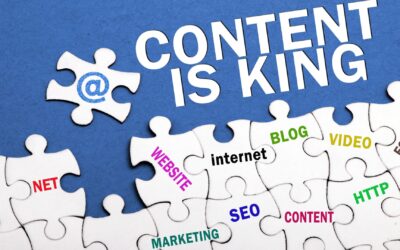- Workplace Diversity and Inclusion
- Keywords
- Key Takeaways
- Real-Life Application
- Frequently Asked Questions (FAQs)
- What are some measures to quantify workplace diversity and inclusion?
- How can diversity and inclusion impact innovation?
- How can small businesses foster diversity and inclusion?
- How to address resistance to diversity and inclusion initiatives?
- Can diversity and inclusion initiatives be too forceful or counterproductive?
- How do global companies address cultural differences in their diversity initiatives?
- How often should diversity and inclusion training be conducted?
- What role do employees play in fostering diversity and inclusion?
- Can technology aid in promoting workplace diversity and inclusion?
- How to ensure diversity and inclusion initiatives are effective?
- Myth Buster
- Myth: Diversity is only about race and gender.
- Myth: Quotas are the best way to achieve diversity.
- Myth: Diversity and inclusion are HR responsibilities only.
- Myth: Workplace diversity leads to conflicts and division.
- Myth: Inclusion means agreeing with everyone’s perspective.
- Myth: Diversity and inclusion are trends that will fade away.
- Myth: The impact of diversity and inclusion is not quantifiable.
- Myth: Focusing on diversity means compromising on skill and competence.
- Myth: Diversity and inclusion are cost-intensive with minimal ROI.
- Myth: Talking about diversity and inclusion can be uncomfortable, so it’s better avoided.
Workplace Diversity and Inclusion
Amidst the silent hum of the bustling city, Alexandra, the CEO of a renowned tech enterprise, stood contemplatively. The sprawling expanse of her office wasn’t just a space teeming with activity; it was a microcosm where ideas breathed, innovations thrived, and diverse talents coalesced into a harmonious cadence of productivity and creativity. Every employee was a unique note contributing to an unseen symphony of workplace diversity and inclusion.
Many miles away, nestled within the artful architecture of a contemporary startup, Raj, a brilliant software developer from India, was a living testament to the narrative that Alexandra often pondered. He was not just a coder but a storyteller weaving logic and creativity into the binary world of zeros and ones. Beside him, Elena, an ingenious designer from Spain, painted digital canvases where art and technology danced in a seamless ballet.
In the harmonious environ of this workplace, the confluence of diverse minds wasn’t just a strategy but an organic reality. Every project, a mosaic of myriad perspectives; every innovation, a blend of distinct insights; every success, a celebration of collective genius. Microsoft, Google, Apple – the behemoths of the tech world and countless other enterprises across sectors were not just organizations but living ecosystems breathing life through the diversity and inclusion embedded in their DNA.
When the team at Google conceived the idea of Google Maps, it wasn’t a solitary spark but a constellation of insights echoing the diverse intellectual landscapes of its creators. In these brainstorming sessions, cultural nuances, multifarious perspectives, and varied experiential wisdom amalgamated. The app wasn’t just a technological marvel but a bridge connecting destinations and desires, crafted through the intricate weaves of a diverse and inclusive workforce.
Alexandra’s enterprise and Raj’s startup were distinct, yet in their unique spaces, diversity wasn’t a static metric but a dynamic narrative. Every employee, irrespective of their race, gender, ethnicity, or orientation, was a valued contributor to the organization’s unfolding story. The women in tech, the international talents, the differently-abled geniuses – every individual was a verse in the poetic existence of their professional abode.
Yet, the path to this harmonious existence wasn’t devoid of challenges. Stereotypes were not just external judgments but internal obstacles; biases, not abstract sentiments but tangible barriers. The transformation to an inclusive workspace was not an event but a journey – of unlearning, relearning, and evolving.
IBM wasn’t just a tech giant but a harbinger of change when it committed to workplace diversity long before it was a norm. The presence of women, the differently-abled, and ethnic minorities wasn’t a token representation but a conscious inclusion, an affirmation that talent wasn’t a monochromatic hue but a vibrant spectrum.
In the contemporary corporate narrative, diversity and inclusion were not just ethical imperatives but strategic assets. A research piece echoed that companies excelling in diversity were more likely to outperform their peers. It wasn’t a numerical coincidence but a qualitative correlation. Diverse teams were crucibles of creativity; inclusive environments, nurseries of innovation.
When Alexandra convened her team for the annual strategy meet, the round table wasn’t just a physical structure but a metaphorical space where hierarchical silos dissolved, and every voice, subtle or assertive, echoed with equal resonance. Decisions weren’t dictates but dialogues; strategies, not impositions but collective visions.
In a world where businesses were not just economic entities but social organisms, the ethos of diversity and inclusion wasn’t an option but a necessity, a silent symphony echoing the harmonious melodies of varied talents, perspectives, and identities.
Years morphed into decades, and as the corporate landscape evolved, the silent notes of diversity and inclusion grew louder, more profound. Organizations were not just profit-driven entities but value-driven organisms. Employees were not resources but human capitals – each a unique blend of skill, perspective, and cultural essence.
As the golden hue of the evening sun painted silhouettes against Alexandra’s window, the cityscape wasn’t a mere physical expanse but a metaphorical vista echoing the silent yet profound narrative of workplace diversity and inclusion. Every building, a monument; every organization, a narrative; every employee, a storyteller – echoing the unseen yet palpable symphony where every note, every pause, every crescendo was a testament to the harmonious dance of diversity and inclusion, an odyssey where businesses and humanity thrived, not in silos but in an intricate, inseparable ballet of existence, evolution, and excellence.
Keywords
- Workplace Diversity: The acknowledgment and appreciation of differences in demographics, backgrounds, education, and perspectives among employees in an organization.
- Inclusion: The practice of ensuring that all employees, regardless of their diverse attributes, are included, valued, and respected in the workplace environment.
- Cultural Nuances: The specific and varied elements, traits, and characteristics that define and distinguish individual cultures.
- Ethical Imperatives: The moral obligations or requirements that are deemed essential and non-negotiable in specific contexts, including workplace settings.
- Stereotypes: Oversimplified and fixed ideas or images that people have about a particular group or thing, often not based on reality.
- Strategic Assets: Valuable resources or capabilities of an organization that contribute significantly to its competitive advantage and achievement of objectives.
- Hierarchical Silos: The lack of communication and interaction between departments or sectors within an organization, typically resulting from a hierarchical structure.
- Social Organisms: Entities that are complexly structured and interconnected, operating in a manner similar to a living organism, often used metaphorically for organizations.
- Value-driven Organisms: Organizations that operate based on a set of core values and principles that guide their strategies, decisions, and actions.
- Human Capital: The collective skills, knowledge, and other intangible assets of individuals that can be used to create economic value for the individuals, their employers, or the community.
Key Takeaways
- Workplace diversity and inclusion are not just ethical choices but are essential for fostering creativity and innovation in an organization.
- Diverse and inclusive companies are likely to outperform their peers due to the variety of perspectives and problem-solving approaches.
- Overcoming stereotypes and biases is a continuous journey of unlearning and relearning and is central to promoting inclusivity.
- Companies, regardless of their size and nature, are social organisms that must embed value-driven practices to thrive.
- Hierarchical silos can be dissolved by fostering an environment where every voice, regardless of rank or department, is valued.
Real-Life Application
Example: Implementing Diversity and Inclusion in a Tech Startup
Action Points:
- Recruitment: Adopt inclusive hiring practices that focus on the skills and potential of candidates rather than their backgrounds or demographics.
- Training Programs: Implement ongoing diversity and inclusion training for all employees to create awareness, reduce biases, and foster a respectful environment.
- Communication Channels: Create open channels for communication where employees can voice their concerns, ideas, and feedback without fear of retribution.
- Employee Resource Groups: Support the formation of employee resource groups for underrepresented employees to foster community, support, and professional development.
- Leadership Commitment: Ensure leadership is visibly committed to diversity and inclusion, setting the tone for the organizational culture.
Frequently Asked Questions (FAQs)
What are some measures to quantify workplace diversity and inclusion?
Companies can assess diversity through demographic metrics and evaluate inclusion through surveys to measure employees’ sense of belonging, respect, and value in the workplace.
How can diversity and inclusion impact innovation?
A diverse workforce brings varied perspectives, leading to creative solutions and innovations. Inclusive environments ensure that these diverse ideas are valued and leveraged.
How can small businesses foster diversity and inclusion?
Small businesses can focus on inclusive hiring, foster a respectful culture, provide diversity training, and ensure leadership models inclusive behavior.
How to address resistance to diversity and inclusion initiatives?
Address resistance through education, communication, and demonstrating the tangible benefits of diversity and inclusion for individual employees and the organization.
Can diversity and inclusion initiatives be too forceful or counterproductive?
Initiatives should be well-planned and balanced, focusing on fostering respect and inclusion organically rather than imposing quotas or tokenism.
How do global companies address cultural differences in their diversity initiatives?
Global companies can adapt their initiatives to respect cultural nuances, laws, and traditions in different regions, ensuring global principles of respect and inclusion are upheld.
How often should diversity and inclusion training be conducted?
Regular, ongoing training is crucial to keep the concepts fresh and adapt to emerging trends, challenges, and opportunities in diversity and inclusion.
What role do employees play in fostering diversity and inclusion?
Employees contribute by being open, respectful, participating in training, and actively engaging in conversations and initiatives related to diversity and inclusion.
Can technology aid in promoting workplace diversity and inclusion?
Yes, technology can assist in unbiased recruitment, collecting feedback, providing training, and facilitating communication and collaboration among diverse teams.
How to ensure diversity and inclusion initiatives are effective?
Regular assessment, feedback collection, adaptation, and visible commitment from leadership ensure the effectiveness of diversity and inclusion initiatives.
Myth Buster
Myth: Diversity is only about race and gender.
Reality: Diversity encompasses a wide range of factors, including but not limited to ethnicity, gender, age, sexual orientation, disability, and educational background.
Myth: Quotas are the best way to achieve diversity.
Reality: Quotas can lead to tokenism. A holistic approach focuses on fostering an inclusive environment that attracts and values diverse talents.
Myth: Diversity and inclusion are HR responsibilities only.
Reality: Every employee, especially leadership, plays a crucial role in fostering and upholding diversity and inclusion in the workplace.
Myth: Workplace diversity leads to conflicts and division.
Reality: While diverse perspectives can lead to debates, they also foster innovation and creativity when managed in an inclusive, respectful environment.
Myth: Inclusion means agreeing with everyone’s perspective.
Reality: Inclusion means respecting and valuing diverse perspectives, not necessarily agreeing with every viewpoint.
Myth: Diversity and inclusion are trends that will fade away.
Reality: These are fundamental principles that are integral for the sustainable growth, innovation, and ethical standing of any organization.
Myth: The impact of diversity and inclusion is not quantifiable.
Reality: Numerous studies indicate a measurable positive impact on creativity, innovation, profitability, and employee satisfaction.
Myth: Focusing on diversity means compromising on skill and competence.
Reality: Diverse hiring focuses on attracting a wide range of skilled candidates, not compromising the quality of hire.
Myth: Diversity and inclusion are cost-intensive with minimal ROI.
Reality: The return on investment includes enhanced innovation, employee satisfaction, brand reputation, and financial performance.
Myth: Talking about diversity and inclusion can be uncomfortable, so it’s better avoided.
Reality: Open conversations are essential to address biases, build understanding, and foster an inclusive and respectful environment. Avoidance perpetuates stereotypes and divisions.












0 Comments